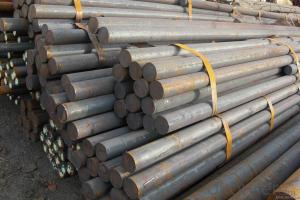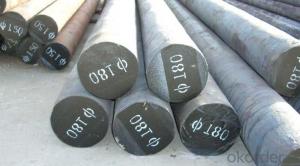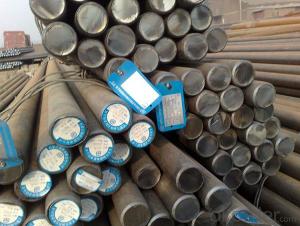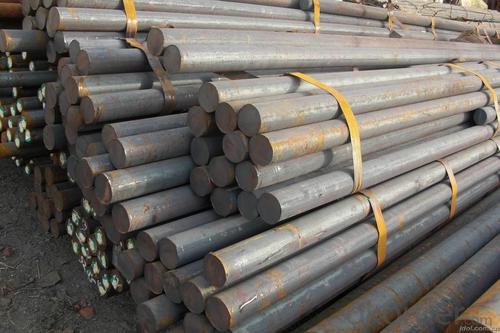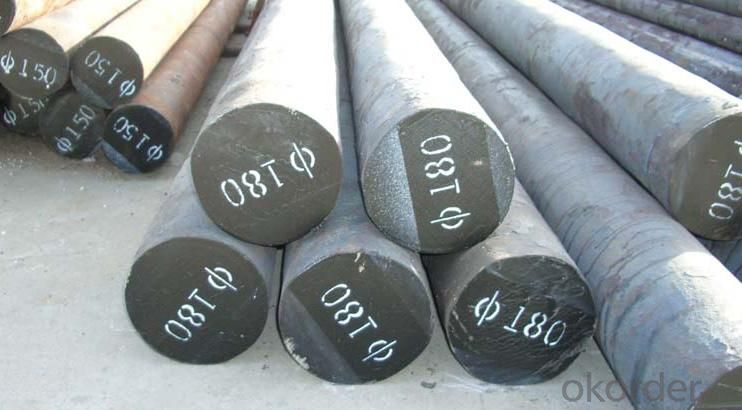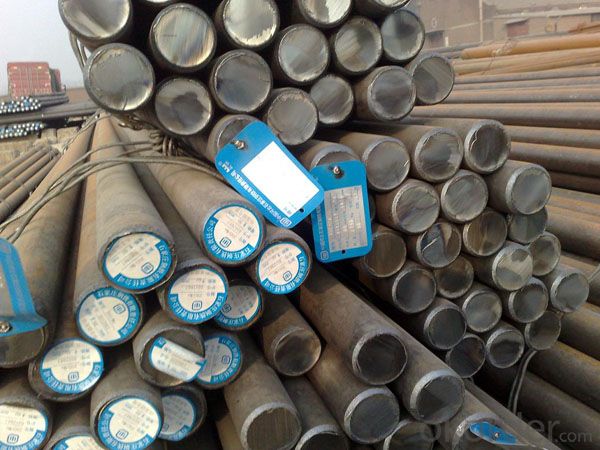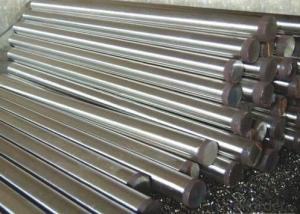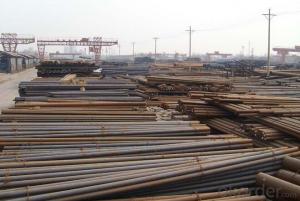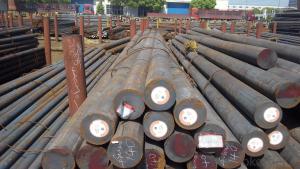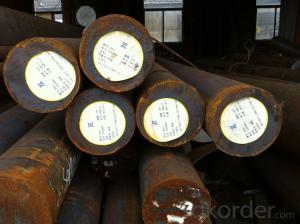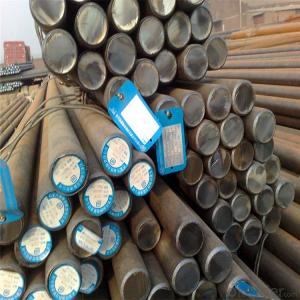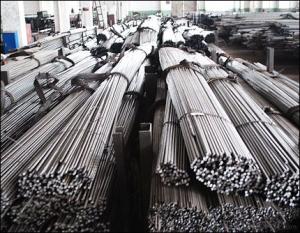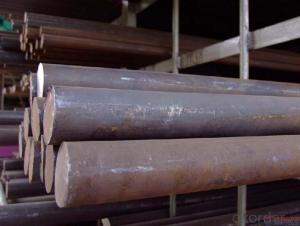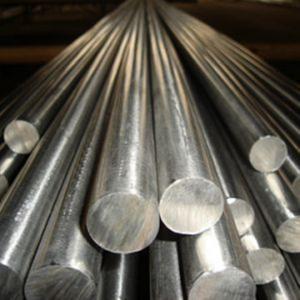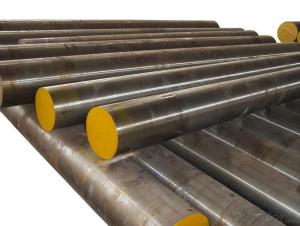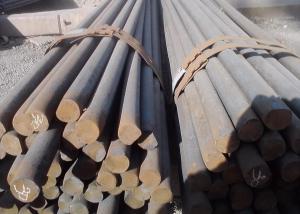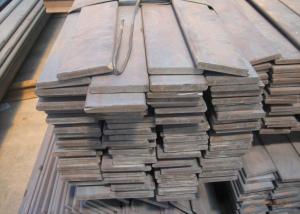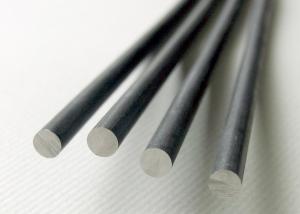High Hardness Carbon Steel S45C CK45 1045
- Loading Port:
- China main port
- Payment Terms:
- TT OR LC
- Min Order Qty:
- 30 m.t.
- Supply Capability:
- 10000 m.t./month
OKorder Service Pledge
OKorder Financial Service
You Might Also Like
Specification
High Hardness Carbon Steel S45C CK45 1045
Product Information:
1. Small quantity, short time delivery
If we have stocks, we can ship from a minimum of 1 kg sample in a few days.
We also manufacture custom-order materials in amounts of 300 kg and up
(Some materials are allowed 50 kg) in as few as 3 weeks.
2. High-precision thickness
We guarantee thickness tolerances that cannot be reproduced by competitors.
Example:
t <0.30mm Tolerance ±1 - 3 μm guaranteed
0.30 mm≤t Tolerance ± 1% guaranteed
3. Ability to add multiple features
We are capable of adding a variety of features to metallic materials
(resin coating, plating, bonding different kinds of metal, multigage skiving, etc.).
4. Unique technology and custom-made solutions
We provide customed solutions to your problems with our unique
technologies and well versed knowledge of materials acquired through
our experience of manufacturing 50,000 items.
5. Choose the appropriate base metals for your needs
We carefully balance quality, delivery time and price,
procure various base metals from all over the world.
We manufacture appropriate products to your needs.
6. To control metal structure(chemical formation)
We can manufacture ultrafine metal structures with a grain size of 1 μm.
Using finer grain sizes provides benefits such as hardenability,
balancing strength and ductility, and precision press processing.
7. Lower total cost
We taking your processing into account,
offer you reduce a total cost by using our product.
8. Global network
Our plant located in Japan, Shanghai and Taiwan,
we also support flexibly local procurement and production transfer.
Product Overviews:
| Product Name | Typical Grades | Diameter(mm) | Standard adopted |
| Carbon Steel | 20 (1020/S20C/C22) | Ø16-Ø300 | GB/SAE/JIS/DIN |
| 40 (1040/S40C/C40) | |||
| 45 (1045/S45C/C45) | |||
| Bearing Steel | GCr9 (51100/SUJ1) | Ø12-Ø250 | |
| GCr15 (52100/SUJ2/100Gr6) | |||
| GCr9SiMn (A485-Gr.1/SUJ3) | |||
| Cr-Mo Steel | 20Cr (5120/SCr420H/20Cr4) | Ø12-Ø250 | |
| 40Cr (5140/SCr440/41Cr4) | |||
| 42CrMo(4140/SCM440/42CrMo4) | |||
| Gear Steel | 20CrNiMo | Ø16-Ø600 | |
| 20CrMn(5115/SMnC420/20MnCr5) | |||
| 20CrNiMo(8620/SNCM220/20CrMiMo2) |
Product Show:
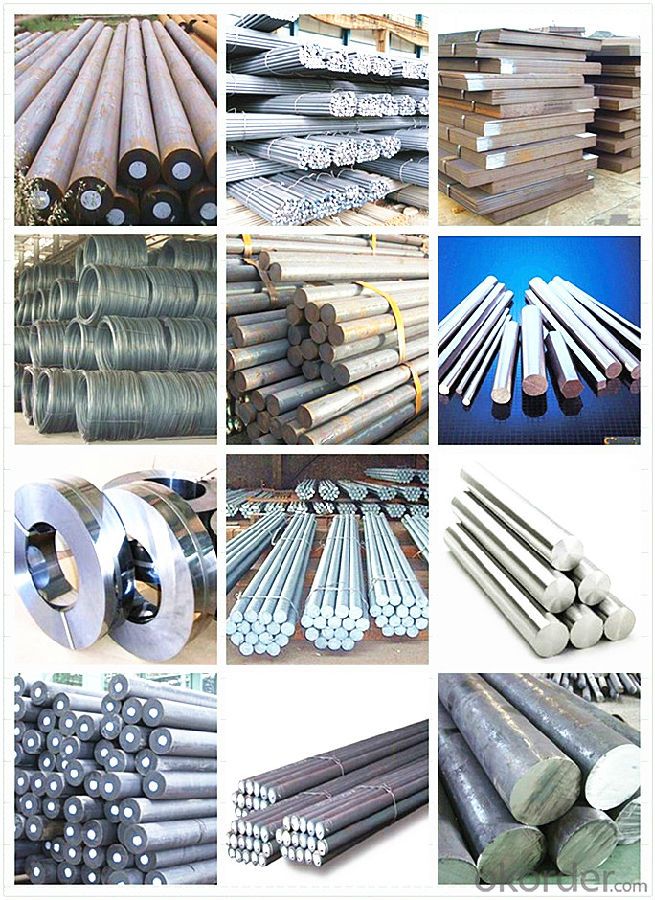
Our Advantages:
· Industry experience over 20 years.
· Shipment of goods -More than 70 countries worldwide.
· The most convenient transport and prompt delivery.
· Competitive price with best service.
· High technical production line with top quality products.
· High reputation based on best quality products.
With our experienced, enthusiastic and dynamic staffs, we assure to bring you the products with best quality, reasonable prices and good after-sales services under the motto: Friends First, Business After.
Communication, Experience, Expertise and Best efforts are our Promises to you.
- Q: How is heat-resistant steel used in high-temperature applications?
- Heat-resistant steel is specifically designed to withstand high temperatures without losing its strength or undergoing structural changes. It is commonly used in high-temperature applications such as power plants, furnaces, and aerospace industry. Due to its ability to maintain its mechanical properties at elevated temperatures, heat-resistant steel is used to fabricate critical components like turbine blades, exhaust systems, and heat exchangers, ensuring reliable and efficient operations even in extreme heat conditions.
- Q: What are the requirements for special steel used in electronic components?
- The special steel used in electronic components must meet specific and strict requirements. To begin with, it needs to have excellent electrical conductivity in order to effectively transmit electrical signals within the components. This is crucial for the proper functioning and performance of electronic devices. Furthermore, the steel used in electronic components must possess high resistance to corrosion in order to protect the components from environmental factors such as moisture, humidity, and exposure to chemicals. Corrosion can cause the deterioration and failure of electronic components, so the steel must be able to withstand these potential hazards. Another important requirement is that the special steel should have low magnetic permeability. Magnetic interference can have a negative impact on the performance of electronic components, particularly in sensitive devices like microchips. Therefore, the steel used in electronic components should have minimal magnetic properties to avoid any interference with the operation of the components. Moreover, the steel must have good thermal conductivity to efficiently dissipate the heat generated within the electronic components. This is particularly crucial in devices that generate a significant amount of heat, as inadequate thermal conductivity can lead to overheating and potential damage to the components. Lastly, the special steel used in electronic components should have high strength and durability to ensure long-lasting and reliable performance. The components are often subjected to mechanical stress, vibrations, and other external forces, so the steel must have the necessary strength to withstand these conditions without deforming or failing. In conclusion, the requirements for special steel used in electronic components include excellent electrical conductivity, high corrosion resistance, low magnetic permeability, good thermal conductivity, and high strength and durability. Meeting these requirements is crucial for achieving optimal performance and durability of electronic devices.
- Q: Can special steel be used for making mining equipment?
- Yes, special steel can be used for making mining equipment. Special steel refers to steel alloys that have been specifically designed and manufactured to possess certain properties and characteristics that make them suitable for specific applications. In the case of mining equipment, special steel is often used due to its exceptional strength, toughness, and resistance to wear and corrosion. Mining equipment is subjected to extreme conditions, such as heavy loads, impact, abrasion, and exposure to harsh environments. Special steel grades, such as high-strength low-alloy (HSLA) steel, tool steel, and wear-resistant steel, are commonly employed in the manufacturing of mining equipment to ensure their durability and performance under these demanding circumstances. Special steel allows mining equipment to withstand the stresses and strains encountered during excavation, hauling, and processing of minerals. It can be used for the fabrication of components like bucket teeth, drill bits, cutting edges, and crusher parts, which need to resist wear and maintain their strength even when exposed to abrasive materials. Moreover, certain types of special steel, such as stainless steel, are particularly suitable for mining operations where equipment comes into contact with corrosive substances like acids or moisture. Stainless steel exhibits excellent corrosion resistance, making it suitable for applications such as pipes, tanks, and conveyors used in mining operations. In conclusion, special steel can indeed be used for making mining equipment. Its superior strength, toughness, wear resistance, and corrosion resistance make it a preferred choice for manufacturing various components and structures used in the mining industry.
- Q: What are the common challenges in heat treating special steel?
- Heat treating special steel can present a variety of challenges. One common challenge is achieving the desired hardness and strength while maintaining the desired microstructure. Special steels often require specific heat treatment processes, such as quenching and tempering, to achieve the desired mechanical properties. However, the high alloy content of these steels can lead to difficulties in achieving uniform heat distribution and controlling the cooling rate during quenching, which in turn can result in inconsistent hardness and potential distortion. Another challenge in heat treating special steel is managing residual stresses. During the heating and cooling process, differential thermal expansion and contraction can cause stress to build up within the steel, leading to potential cracking or distortion. Special care must be taken to minimize these stresses through proper heat treatment techniques, such as preheating and controlled cooling rates. Special steels often have stringent cleanliness requirements, as impurities or non-metallic inclusions can negatively impact their mechanical properties. Ensuring the cleanliness of the steel prior to heat treatment can be challenging and may require additional steps such as degreasing, pickling, or using protective atmospheres during heat treatment. Furthermore, some special steels are highly sensitive to overheating, which can lead to grain growth and loss of desired properties. Precise temperature control and monitoring are crucial to prevent overheating and ensure consistent results. Lastly, special steels may have specific time-temperature transformation (TTT) and continuous cooling transformation (CCT) characteristics that need to be considered during heat treatment. Understanding and adhering to the appropriate heating and cooling cycles are essential for achieving the desired microstructure and properties. In summary, the common challenges in heat treating special steel include achieving the desired hardness and microstructure, managing residual stresses, ensuring cleanliness, preventing overheating, and adhering to specific time-temperature transformation characteristics. Overcoming these challenges requires expertise, precise control, and adherence to strict heat treatment protocols.
- Q: Can special steel be used for nuclear power plant components?
- Yes, special steel can be used for nuclear power plant components. Special steel alloys, such as stainless steel or low alloy steel, are commonly used in the construction of various components in nuclear power plants due to their high strength, corrosion resistance, and ability to withstand high temperatures and radiation exposure. These properties are crucial for ensuring the safety and longevity of nuclear power plants.
- Q: How is special steel used in the mining manufacturing process?
- Special steel is used in the mining manufacturing process for various applications such as drill bits, crushing equipment, conveyor systems, and structural components. Its exceptional strength, durability, and resistance to wear and corrosion make it ideal for withstanding the harsh conditions of mining operations and ensuring the efficiency and reliability of mining machinery and infrastructure.
- Q: What are the different certifications available for special steel?
- Depending on the specific industry and application, there are multiple certifications available for special steel. Some of the well-known certifications are as follows: 1. ISO 9001: This certification ensures that the special steel manufacturer has implemented and maintained a quality management system that adheres to international standards. It signifies the company's dedication to consistently delivering products that meet customer requirements. 2. ISO 14001: This certification focuses on environmental management and guarantees that the special steel manufacturer has adopted eco-friendly practices in their operations. It showcases the company's commitment to reducing their impact on the environment. 3. Certifications by ASME (American Society of Mechanical Engineers): ASME provides several certifications for special steel used in pressure vessels, boilers, and other applications. These certifications ensure that the special steel meets industry-specific quality and safety standards. 4. PED (Pressure Equipment Directive): This certification is mandatory for special steel used in pressure equipment within the European Union. It guarantees that the steel meets specific safety and quality requirements. 5. Certifications by NACE (National Association of Corrosion Engineers): NACE offers certifications for special steel used in corrosive environments. These certifications ensure that the steel possesses the necessary resistance against corrosion and can endure harsh conditions. 6. Certifications by API (American Petroleum Institute): API offers certifications for special steel used in the oil and gas industry. These certifications ensure that the steel meets various quality and performance standards required for different applications in the industry. 7. Certifications by ASTM (American Society for Testing and Materials): ASTM provides various certifications for special steel based on specific standards and specifications. These certifications guarantee that the steel satisfies the required mechanical properties, chemical composition, and other criteria. Manufacturers, suppliers, and end-users should take these certifications into consideration when selecting special steel for their specific applications. These certifications provide confidence and assurance regarding the quality, safety, and performance of the special steel products.
- Q: What are the different methods of improving the corrosion resistance of special steel?
- Improving the corrosion resistance of special steel can be accomplished through several available methods. Some commonly utilized techniques include: 1. Alloying: Enhancing corrosion resistance can be effectively achieved by alloying the steel with specific elements. For instance, the addition of chromium forms a protective chromium oxide layer on the surface, acting as a barrier against corrosion. Other elements such as molybdenum, nickel, and copper can also be incorporated to enhance corrosion resistance. 2. Surface treatments: Various surface treatments can be employed to augment the steel's corrosion resistance. Galvanizing, for example, involves coating the steel with a layer of zinc, providing protection against corrosion. Another method, electroplating, deposits a thin layer of a more corrosion-resistant metal like nickel or chromium onto the steel surface. 3. Passivation: Passivation is a chemical process that eliminates free iron and other contaminants from the steel surface, resulting in the creation of a passive film that aids in corrosion resistance. This method is frequently used for stainless steel, in which a thin layer of chromium oxide is formed by treating the steel with an oxidizing agent such as nitric acid. 4. Protective coatings: The application of protective coatings on the steel surface significantly enhances its corrosion resistance. Various types of coatings, such as paints, epoxy coatings, and ceramic coatings, act as a barrier between the steel and the corrosive environment, preventing direct contact and corrosion. 5. Heat treatment: Heat treatment techniques, including annealing, quenching, and tempering, can alter the steel's microstructure, thereby enhancing its corrosion resistance. Heat treatment improves the steel's mechanical properties, reduces residual stresses, and eliminates impurities, all of which contribute to better corrosion resistance. 6. Design considerations: Proper design and construction techniques play a crucial role in improving the corrosion resistance of special steel. For instance, the elimination of sharp corners and crevices, the use of appropriate drainage systems, and ensuring proper ventilation can prevent the accumulation of moisture and corrosive agents. It is important to note that the selection of the most suitable method depends on the specific application, environment, and desired level of corrosion resistance. Optimal results can often be achieved by employing a combination of these methods.
- Q: How does special steel contribute to the manufacturing of structural components?
- The unique properties and characteristics of special steel are crucial in the manufacturing of structural components. Firstly, its exceptional strength and durability make it an ideal material for load-bearing structures, as it can withstand high levels of stress, pressure, and heavy loads, ensuring their safety and integrity. In addition, special steel's excellent corrosion resistance is particularly important for structural components exposed to harsh environments. This feature helps prevent rusting and deterioration, thereby extending the lifespan of the components and reducing maintenance costs. Moreover, special steel offers a high degree of versatility in terms of design and fabrication. It can be easily shaped, molded, and welded, allowing manufacturers to create complex and intricate components with precision. This flexibility enables the production of customized components that meet specific requirements, enhancing the overall performance and functionality of the structures. Furthermore, special steel exhibits excellent heat resistance and fireproofing properties, making it suitable for components exposed to high temperatures or fire hazards. This is particularly important in industries such as industrial facilities, power plants, or transportation infrastructure, where fire protection is vital. Additionally, special steel often has superior fatigue resistance, allowing it to withstand repetitive or cyclic loading without suffering from fatigue failure. This property is crucial for components subjected to dynamic or fluctuating loads. In conclusion, special steel significantly contributes to the manufacturing of structural components by providing strength, durability, corrosion resistance, versatility in design, heat resistance, fireproofing, and fatigue resistance. Its unique properties make it an essential material choice for constructing safe, reliable, and long-lasting structures across various industries.
- Q: How does special steel contribute to reducing product costs?
- Special steel contributes to reducing product costs in several ways. Firstly, special steel has a higher strength-to-weight ratio, meaning that less material is required to achieve the same strength and performance as traditional steel. This reduces the overall amount of steel needed for manufacturing, leading to cost savings. Additionally, special steel is known for its durability and resistance to wear, corrosion, and heat, thus reducing the need for frequent repairs or replacements. This prolongs the lifespan of products, resulting in reduced maintenance and replacement costs. Furthermore, special steel often allows for more precise and efficient manufacturing processes, such as forging or machining, which can lower production costs by minimizing waste and improving productivity. Overall, the use of special steel in product manufacturing helps to optimize material usage, enhance durability, and streamline production, consequently reducing product costs.
Send your message to us
High Hardness Carbon Steel S45C CK45 1045
- Loading Port:
- China main port
- Payment Terms:
- TT OR LC
- Min Order Qty:
- 30 m.t.
- Supply Capability:
- 10000 m.t./month
OKorder Service Pledge
OKorder Financial Service
Similar products
Hot products
Hot Searches
Related keywords
